Glaciers are delicate indicators of climate change. For the local people in Central Asia, they are also an important source of fresh water and a back-up reservoir for times of drought. The Ministry for Foreign Affairs of Finland, together with the Finnish Meteorological Institute, began assisting Kyrgyzstan and Tajikistan to restart their official glacier monitoring activities in 2018.
The previous blog posts have introduced the measurement activities at the Turgan Aksuu glacier in Kyrgyzstan, and GGP-glacier in Tajikistan, and described the conditions and life at the expeditions. Perhaps now would be a good time to introduce the experts from the Finnish side, who conduct the expeditions.
Scientists, specialists, cooks and donkeys
The expedition participants from Finland are a relatively compact team of experts, who can work in outdoor field conditions and have the skills to conduct the relevant research on the glaciers.
They are:
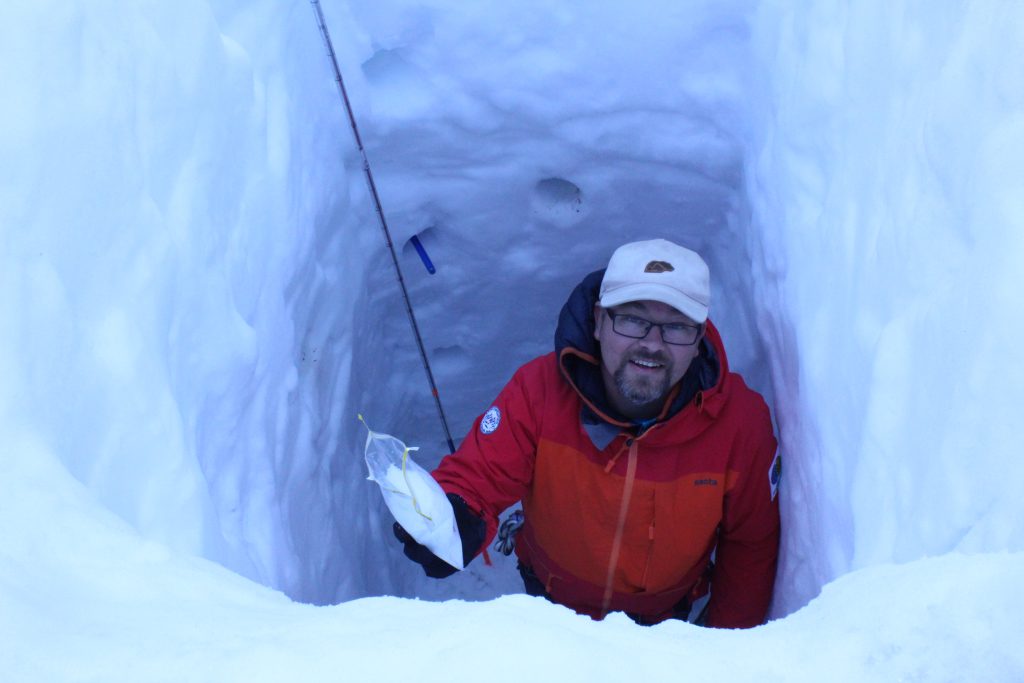
Antti: project component head, atmospheric scientist 
Mika: logistics and safety specialist 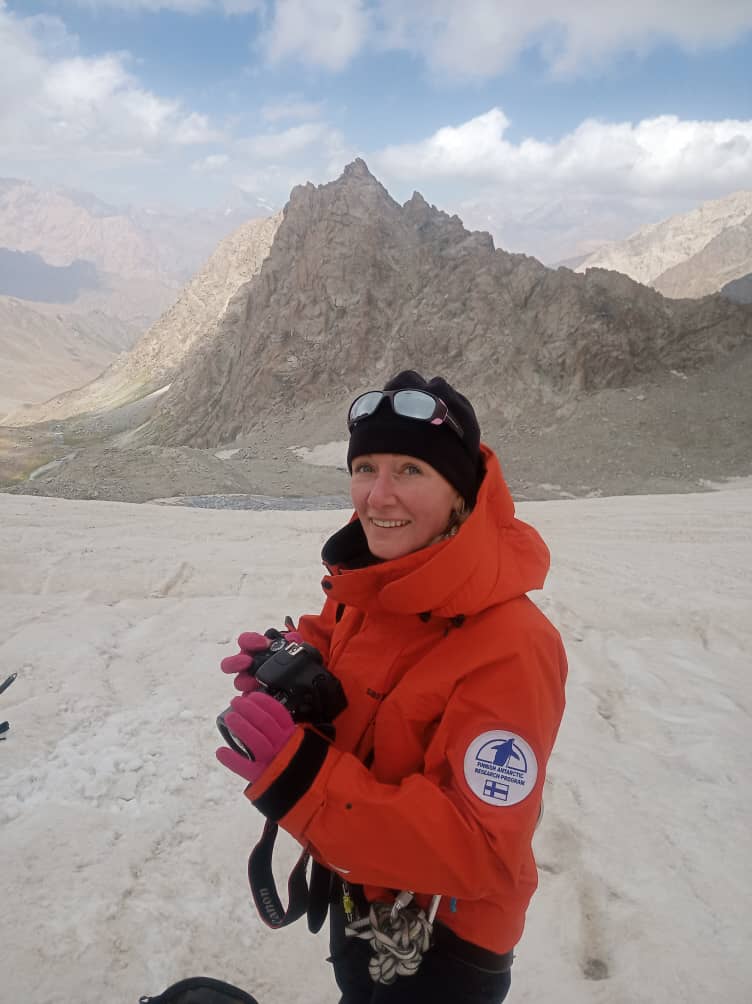
Eija: atmospheric scientist 
Jonas: snow and atmospheric scientist 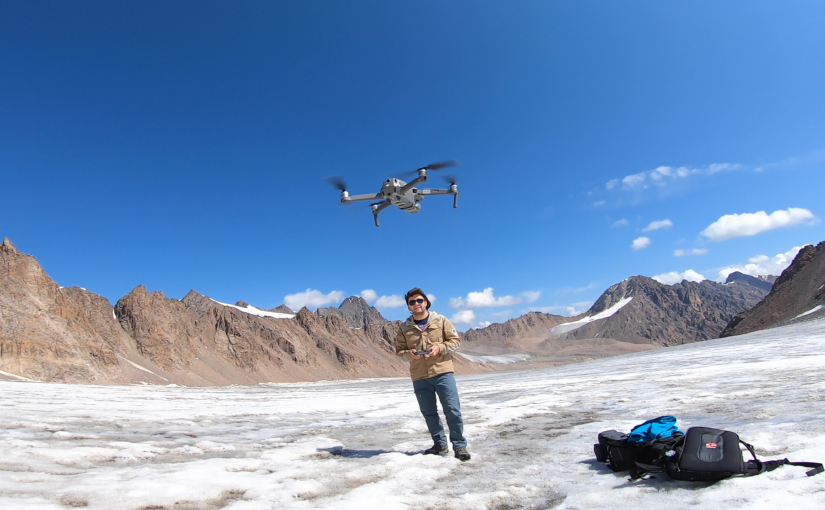
David: atmospheric scientist and drone specialist 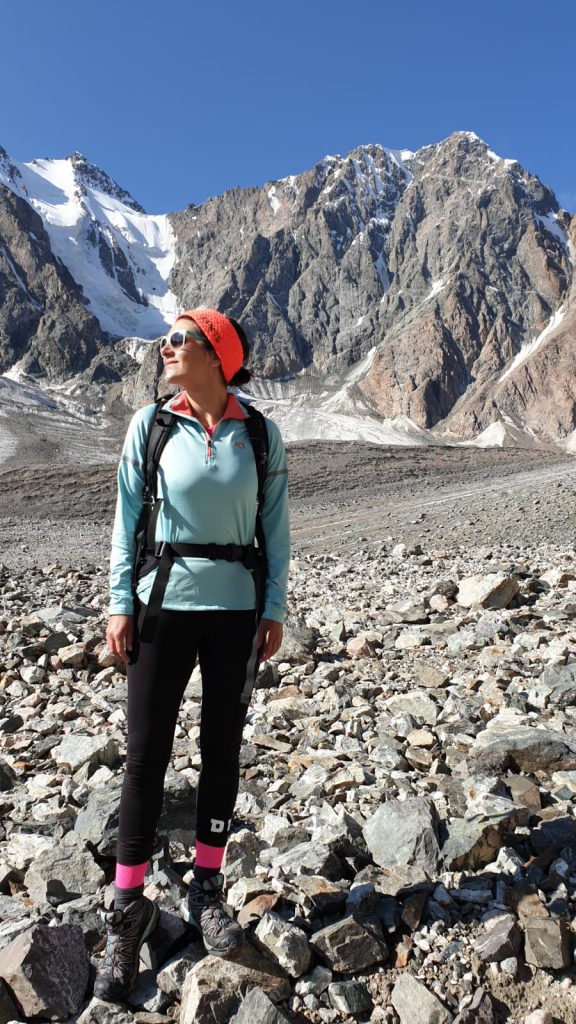
Magdalena: communications specialist
Typically, two or three Finnish experts join the expedition conducted each autumn both in Kyrgyzstan and Tajikistan. Regional co-operation is enhanced by two Tajik experts joining expeditions in Kyrgyzstan and vice versa.
The expedition team is completed by local experts, mountain guides, a cook, and assistants, bringing the total number of expedition members to around 15. Excluding the donkeys or horses. Our latest expedition took place at the GGP glacier in Tajikistan, and this time the Finnish participants were me (Antti) and Eija.

Local people are an asset in many ways
For the first time, we did not have a Finnish expert (David) for drone operations but relied on the improved skills of the Kyrgyz and Tajik experts to utilize the drones independently. Drone photography with GPS is an important annual measurement, as it tells directly how the glacier has moved. Supporting information is obtained from the heights and locations of ablation stakes, which were also identified and recorded on this trip.
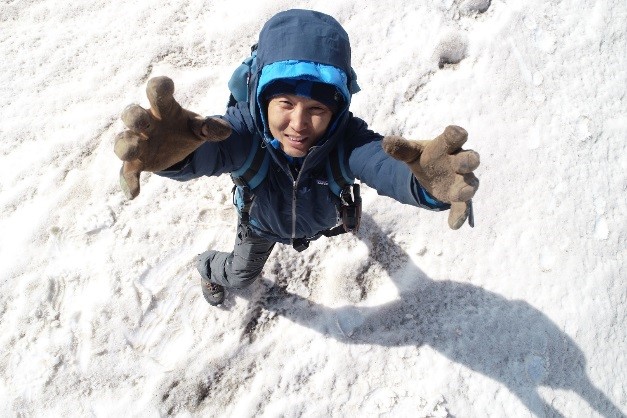
Unlike at the Turgan Aksuu glacier in Kyrgyzstan, where some of the stakes were exposed up to four meters from the previous year, the surface level at GGP ablation zone had not decreased. The year had been good for the GGP, this time.
We soon understood why GGP was doing well. Heavy snow load, told to be up to 3 meters high, during the winter had damaged the arms and legs of our weather station installed the previous year. Luckily, the damages could be repaired, and all critical components were ok.
However, the station was – as a precaution – relocated to a place which should gather less snow in the winter. This information was told us by a local sheep herder.
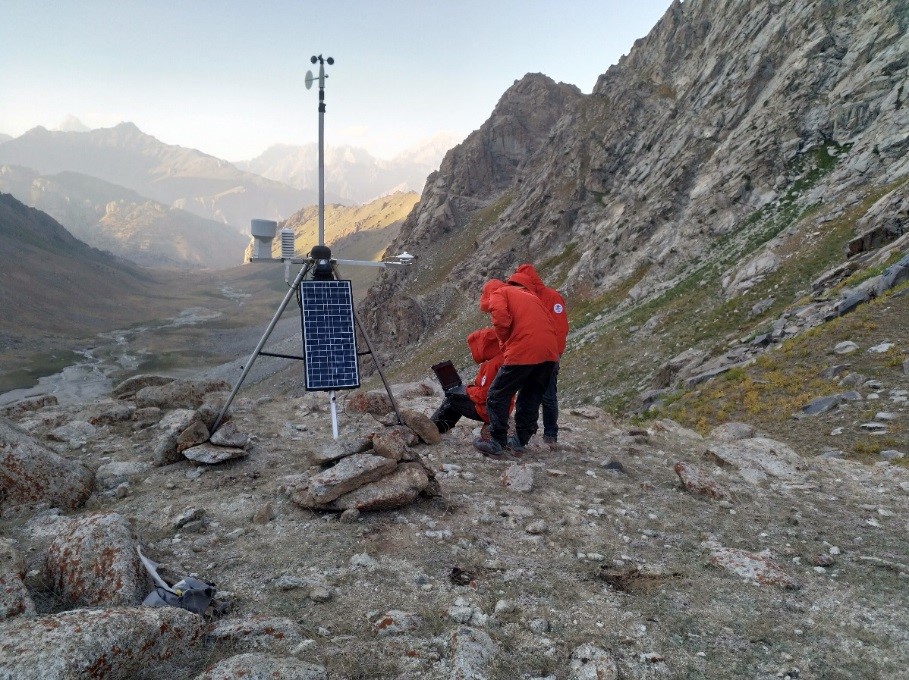
Digging snow pits is a proper exercise
At the glacier top we could confirm the information of the 3 meters of snow while digging a snow pit. Annual snow can be distinguished from the snow pits as ice layers, and the first ice layer was hit at the depth of 280 cm – that was a sweaty day!
A second pit with 2 meters of snow was dug on the following day lower on the glacier to get more information about the glacier surface snow’s structure.
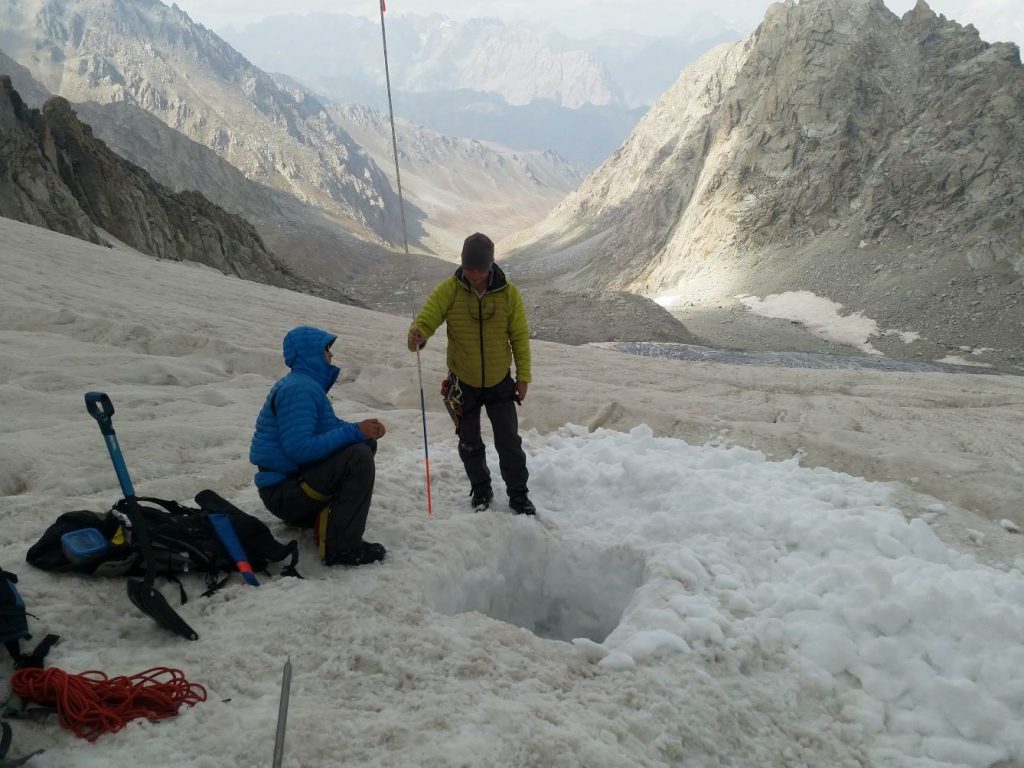

In addition to digging snow pits, measurements were conducted at the surface snow. The surface snow contained a wondrous variety of different colors – black, gray, brown and even red. These impurities absorb sunlight and make the glacier snow melt faster than clean snow, so it is important to understand where they come from.
In the Arctic areas, black carbon, mineral dust, and even algae living in snow are known culprits, and the similar compounds may be responsible here. Samples were taken to later identify the compounds in the impurities. In addition, reflectance of snow was measured – to understand how dirty and clean snow absorb sunlight at GGP.
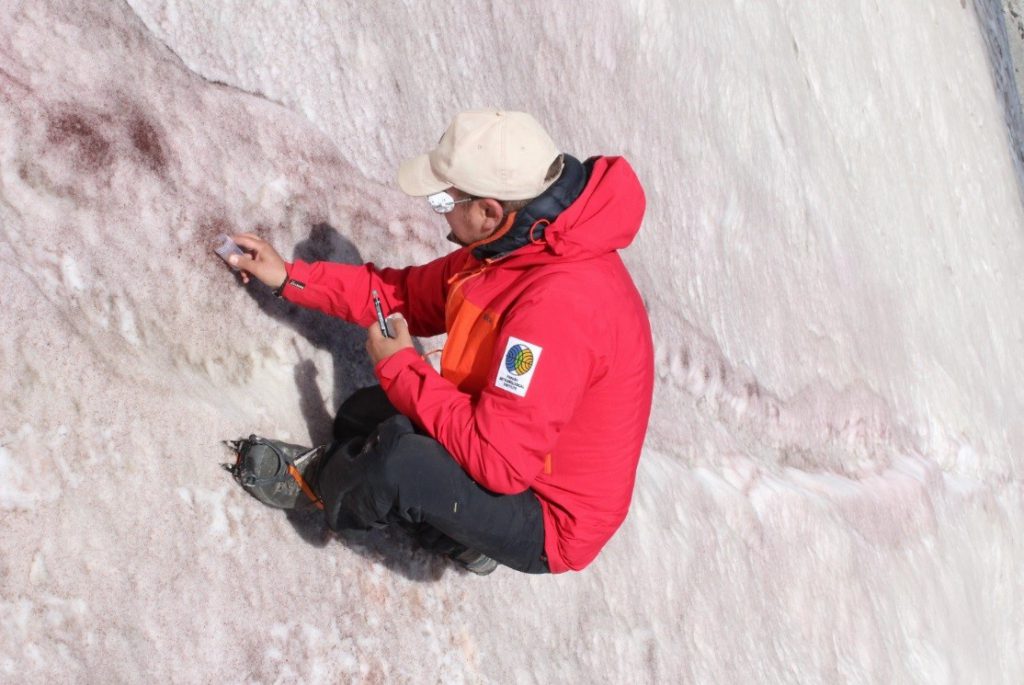
Results and experiences will be shared in a workshop
All in all, the expedition on the GGP was a successful one. Now, after two consecutive expeditions to Kyrgyzstan and Tajikistan, first results and conclusions about the state of the glaciers in both countries can be made.
For this, a workshop is planned in spring 2020 with all the expedition experts. There is already an exited buzz in both countries over the experiences gather during the expeditions. Not only for re-starting the monitoring program terminated over 30 years ago, but for learning new methods and gaining new confidence to work at the glaciers.
We are already hearing ideas from our Kyrgyz and Tajik colleagues to extend the measurements and expand to new glaciers, so ambition is clearly growing. Clearly this is the kind of development work that is wanted in these countries. Let’s hope we can build something long-term and sustainable!
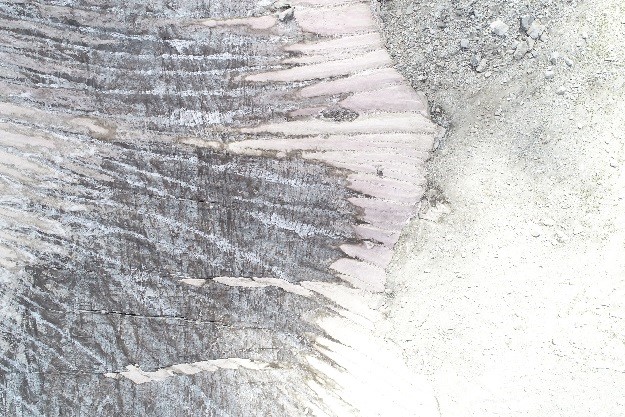
Text: Antti Hyvärinen
The writer works as an atmospheric scientist at the Finnish Meteorological Institute.
Main picture: Roped together for the ascent to the glacier top. Yakub Shoev

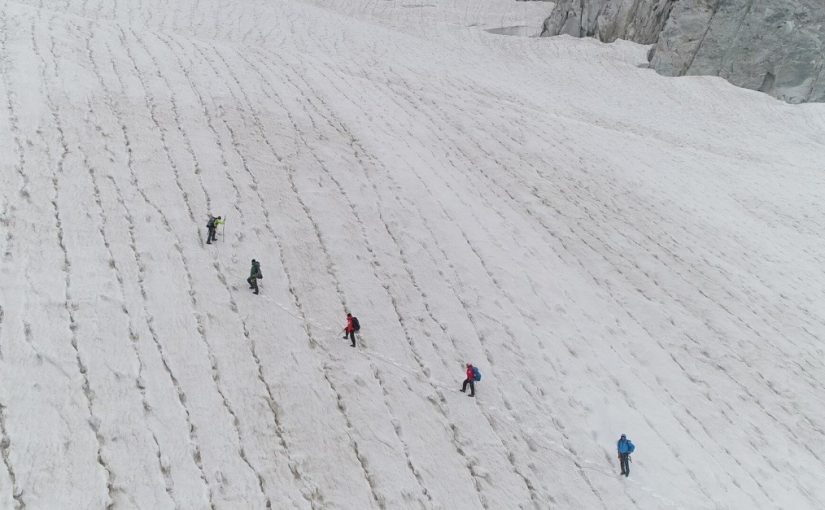



Tosi mielenkiintoista luettavaa ajankohtaisesta aiheesta. Onnea ja menestystä tärkeään työhönne. Vanha ope täällä on ylpeä entisestä oppilaastaan !
Kiitos Sinikka!